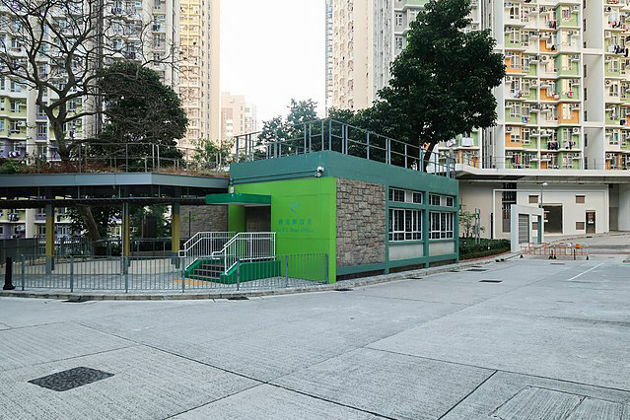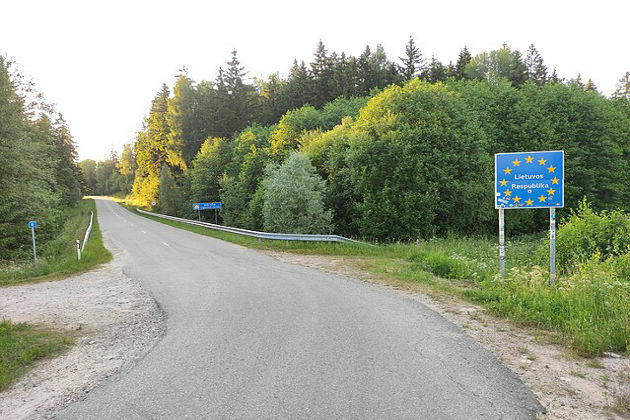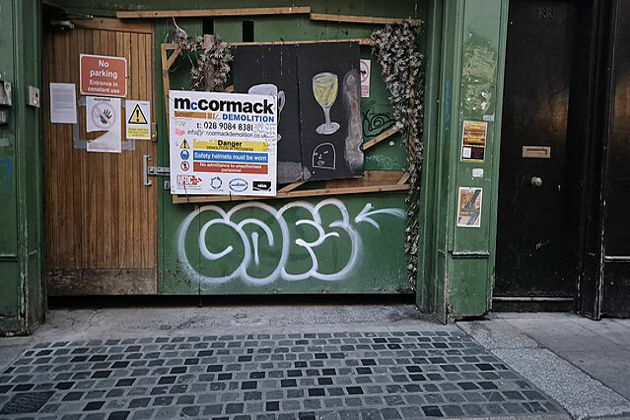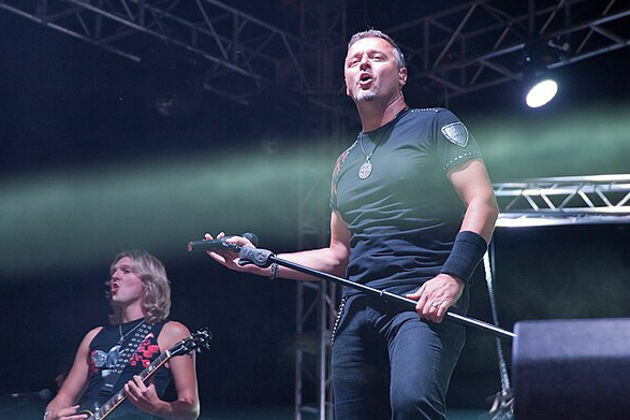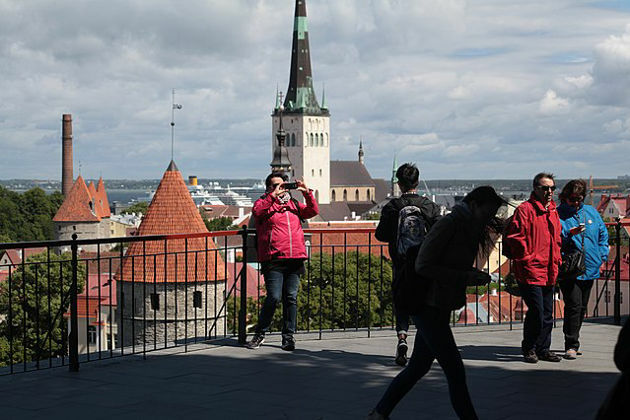Book review | A graphic satire on rebuilding Yerevan
Eurasianet
16 Nov 2019, 00:19 GMT+10
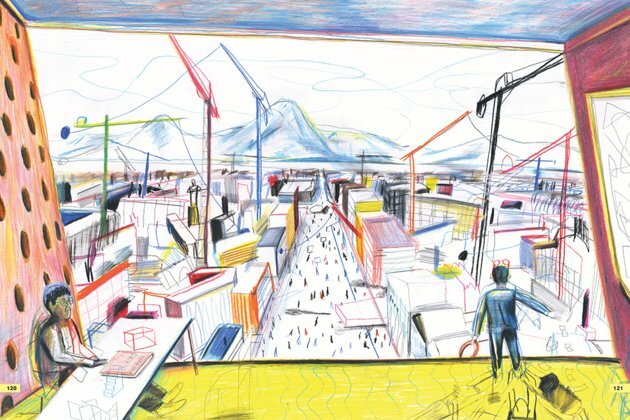
An impressionable young diaspora Armenian returns to his ancestral homeland to rid its capital of its Soviet heritage and rebuild the city anew. It's a familiar story in post-Soviet Armenia.
But for Frunz, the hapless but well-meaning hero of Viken Berberian and Yann Kebbi's new graphic novel The Structure is Rotten, Comrade!, "rebuilding" Yerevan is meant literally - he is an architect set on physically transforming the city.
Berberian, a Beirut-born novelist and essayist, has lived in Yerevan for the last four years, a turbulent time for the city. So it's no surprise that his Yerevan, brought to life by the Paris-based illustrator Kebbi, is littered with cranes; its residents narrowly avoid wrecking balls on a daily basis. Much of this is the doing of Frunz's father Sergey, who is known as "Mr. Concrete" and directs the tragically misnamed Radical Architecture Department (RAD). The book opens with Frunz having dropped out of architecture school in Paris and joining his father's business.
But the father and son's bold visions prove their undoing. The city they regard as a blank canvas for their experiments is home to a million people who do not take kindly to this relentless "redevelopment." In an absurdist twist, they compensate evicted homeowners with original Alvar Aalto stools, and see the citizens' ingratitude as evidence of their inability to grasp the architects' genius.
Ultimately, though, Frunz and Sergey prove to be little more than enablers of oligarchs' wholesale destruction of the Armenian capital. "The structure is rotten, comrade!" one resident screams at Frunz.
The parallels with the Armenian capital's predicaments are obvious to anyone who has strolled down Yerevan's Northern Avenue, where empty luxury apartments tower over outlets of luxury international brands. There is an increasingly common sentiment that downtown Yerevan is no longer a city for its residents.
The most notorious examples of this "redevelopment" are peppered throughout Berberian's story. Frunz takes some eager architecture students to the Pak Shuka, the Soviet-era covered market which was controversially turned into a shopping mall in 2013. Later, when the city is in the convulsions of an uprising, revolutionaries paint the word "Afrikyants" on the walls of the burning city - a reference to another real-life architectural controversy, the 2017 demolition of the Tsarist-era Afrikyants Mansion.
And while Yerevan residents displaced by the city's renewal were given small sums of money rather than stools, they still had to leave their homes under duress. Some of their cases have even ended up in the European Court of Human Rights.
The revolution that stops Frunz in his tracks presages more recent events, though the authors finished writing the book before the 2018 "Velvet Revolution" that toppled the government of Serzh Sargsyan and ushered in the reformist leadership of current president Nikol Pashinyan. (The Structure is Rotten, Comrade! was published in French by Edition Actes Sud in 2017.)
After being struck by one of his family's errant wrecking balls, Frunz awakes in hospital to find the city in flames; a "permanent people's revolution" has been declared and the "big brotherly leader" ousted. The people of Yerevan smash their original Alvar Aalto stools with glee, before turning on Frunz and his father.
Berberian's story defies easy categorization. Architects will enjoy its references; father and son are steeped in admiration for the Bauhaus school and the modernism of Le Corbusier. But you don't need to know anything about the Finnish designer to understand the symbolism of Aalto's loathed stools: namely, the inability of city planners and the city's rulers to address basic needs. With anti-gentrification movements simmering across the world, that is a message which carries well beyond Armenia.
But there is also lush symbolism here for Caucasus watchers. While Berberian admitted in a recent interview with Monocle magazine that he didn't initially intend to write a political story, he nevertheless also has written rich observations on Armenia's "Velvet Revolution."
Armenians may not have taken to the streets to riot against concrete, but the localized protests in defense of public space and against "regeneration" certainly galvanized Yerevan in the years leading up to 2018, to which Berberian's revolution bears some similarities. Kebbi's style is suited to a city in perpetual renewal and the mayhem it inflicts on the inhabitants; half transparent faces and buildings clash in riotous pencil scrawls, barely contained by the book's 320 pages. It's incoherent, but calculatedly so; you could even say it begs the stark simplicity of concrete.
That same desire runs through the self-assured Frunz; for all his promises of "concrete solutions to concrete problems," he seems adrift - a young man with the wrong sense of purpose at the wrong time. Yerevan, too, is no stranger to reinvention. The modern Armenian capital is largely the product of architect Alexander Tamanyan and bears little resemblance to pre-Soviet Yerevan. For all his declared dedication to "form and function," Frunz's reinvention of the city is one without a commitment - not to ideology, nor even the benefit of its residents. It is a reinvention imposed from above, from without, and for somebody else.
And that is why Berberian and Kebbi's book is ultimately an homage to revolt against those rotten structures imposed from above, and not only by architects. With the world aflame, and Armenia's revolution one of the few positive sparks of recent years, there is a fitting irony when the leader of the revolution urges his comrades: "Don't leave for Moscow, Berlin, Paris, LA, Silicon Valley; we have a global brand to build here, indomitable soldiers!"
 Share
Share
 Tweet
Tweet
 Share
Share
 Flip
Flip
 Email
Email
Watch latest videos
Subscribe and Follow
Get a daily dose of Irish Sun news through our daily email, its complimentary and keeps you fully up to date with world and business news as well.
News RELEASES
Publish news of your business, community or sports group, personnel appointments, major event and more by submitting a news release to Irish Sun.
More InformationInternational
SectionGaza War sucking life out of an Israeli generation
In the past month alone, 23 Israeli soldiers have been killed in Gaza—three more than the number of remaining living hostages held...
Faulty IT system at heart of UK Post Office scandal, says report
LONDON, U.K.: At least 13 people are believed to have taken their own lives as a result of the U.K.'s Post Office scandal, in which...
Travelers can now keep shoes on at TSA checkpoints
WASHINGTON, D.C.: Travelers at U.S. airports will no longer need to remove their shoes during security screenings, Department of Homeland...
Rubio impersonator used AI to reach officials via Signal: cable
WASHINGTON, D.C.: An elaborate impersonation scheme involving artificial intelligence targeted senior U.S. and foreign officials in...
Warsaw responds to migration pressure with new border controls
SLUBICE, Poland: Poland reinstated border controls with Germany and Lithuania on July 7, following Germany's earlier reintroduction...
Deadly July 4 flash floods renew alarm over NWS staffing shortages
WASHINGTON, D.C.: After months of warnings from former federal officials and weather experts, the deadly flash floods that struck the...
Europe
SectionIrish Rail faces 26,000-euro bill after graffiti spree by man
DUBLIN, Ireland: Irish Rail incurred over 26,000 euros in damages due to a series of graffiti incidents carried out by a 24-year-old...
Warsaw responds to migration pressure with new border controls
SLUBICE, Poland: Poland reinstated border controls with Germany and Lithuania on July 7, following Germany's earlier reintroduction...
Ireland’s PM ‘hopeful’ of EU-US tariff deal before July 9 deadline
DUBLIN, Ireland: Taoiseach Micheál Martin has expressed cautious optimism that the European Union and the United States can strike...
Fans perform WWII-era Fascist salute at Marko Perković’s mega concert
ZAGREB, Croatia: A massive concert by popular Croatian singer Marko Perković, known by his stage name Thompson, has drawn widespread...
Ireland’s citizens undeterred as Europe swelters in record heat
DUBLIN, Ireland: Despite extreme heat gripping much of mainland Europe, Irish holidaymakers are pressing ahead with their travel plans,...
Beijing hits back at EU with medical device import curbs
HONG KONG: China has fired back at the European Union in an escalating trade dispute by imposing new restrictions on medical device...


